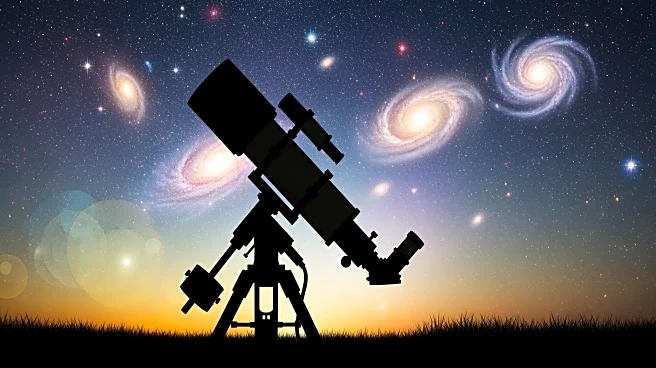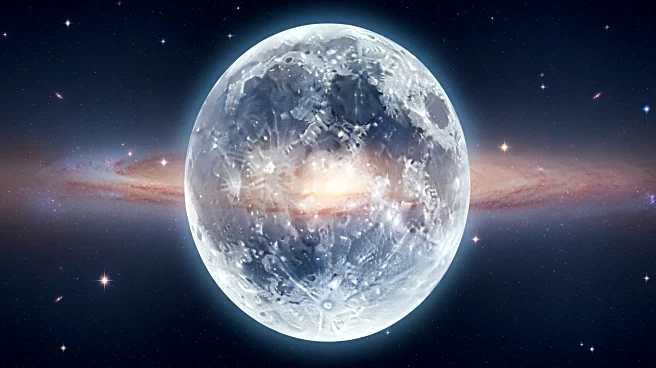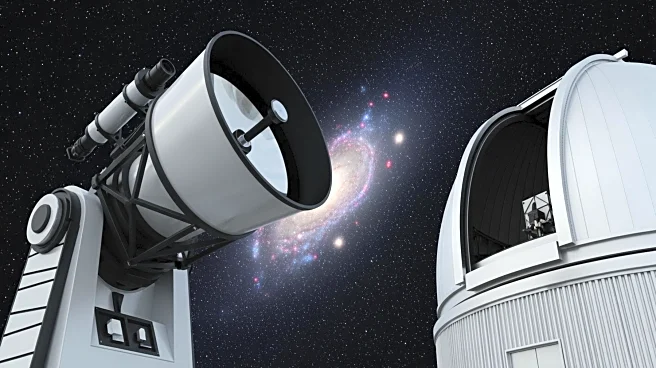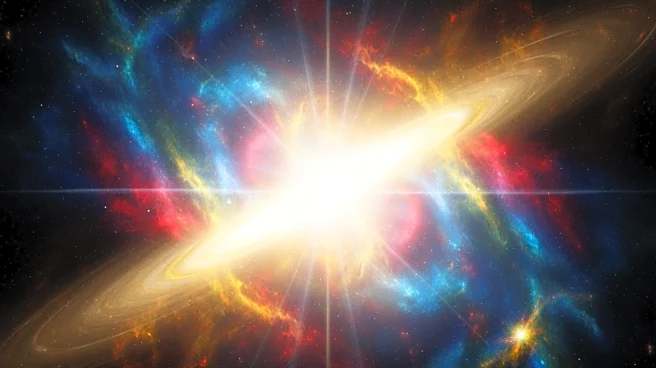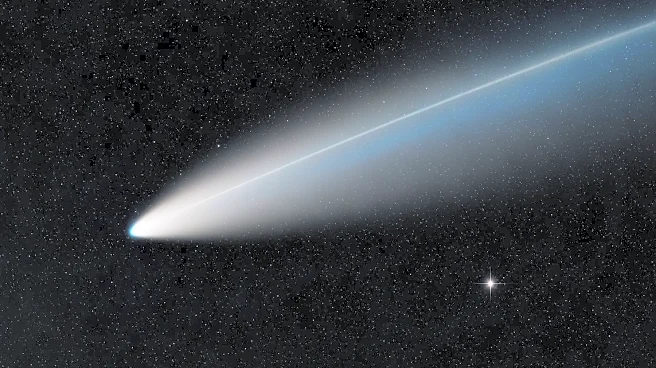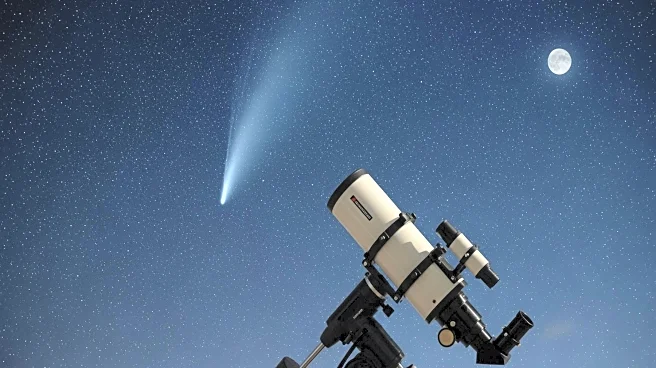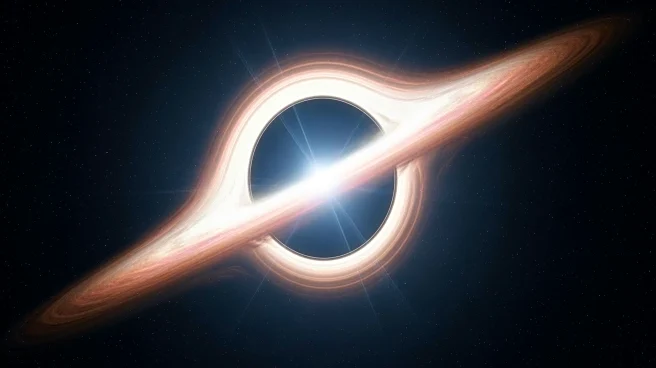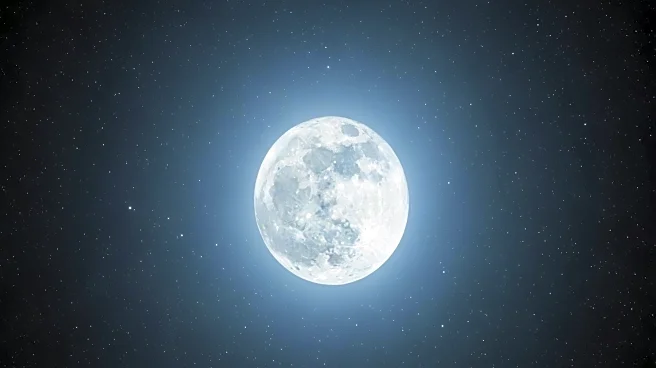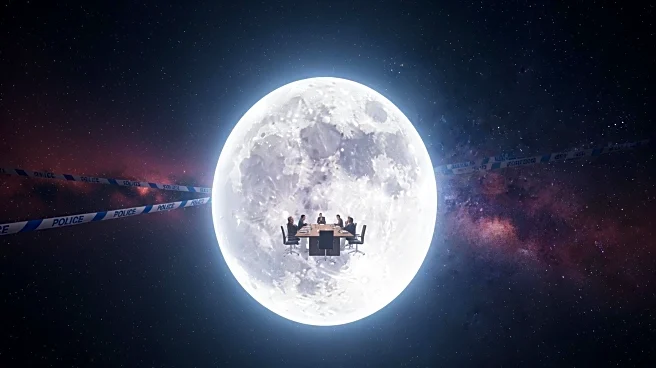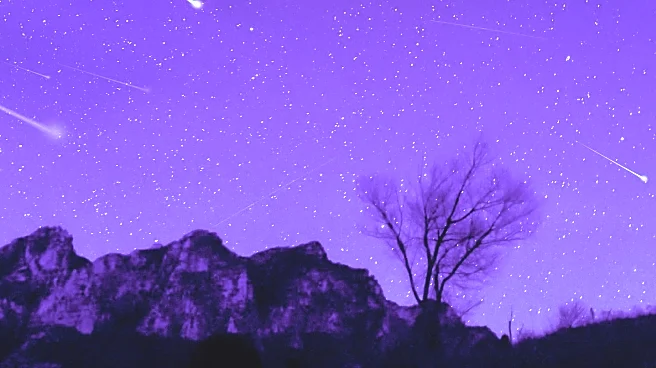What's Happening?
The Very Large Telescope (VLT), located in Chile's Atacama Desert, has captured a breathtaking image of the Milky Way, showcasing the natural phenomenon known as airglow. Operated by the European Southern Observatory, the VLT is renowned for its advanced
astronomical capabilities, allowing scientists to explore distant galaxies and celestial phenomena. The recent image highlights the Milky Way arcing over the VLT's massive domes, with a soft green and red glow visible on the horizon. This glow, known as airglow, results from chemical reactions in Earth's upper atmosphere, where atoms and molecules emit light. The Atacama Desert's remote location and minimal light pollution make it one of the best places on Earth to observe such phenomena.
Why It's Important?
The image captured by the VLT underscores the importance of preserving dark sky sites like the Atacama Desert. As urban expansion and satellite constellations increase, the threat of light pollution encroaching on these pristine environments grows. Protecting these areas is crucial not only for scientific research but also for cultural and environmental reasons. The ability to observe natural phenomena like airglow and the Milky Way in their full glory is becoming increasingly rare, making the preservation of such sites a priority for astronomers and environmentalists alike. The VLT's work contributes significantly to our understanding of the universe, and maintaining its optimal operating conditions is essential for future discoveries.
What's Next?
Efforts to protect dark sky sites are likely to intensify as the impact of light pollution becomes more pronounced. Astronomers and environmental groups may advocate for stricter regulations on artificial lighting and satellite deployments to safeguard these critical observation locations. Additionally, the scientific community may increase public awareness campaigns to highlight the importance of preserving natural darkness for both scientific and cultural heritage. The ongoing advancements in telescope technology will continue to rely on these dark sky sanctuaries to push the boundaries of astronomical research.
Beyond the Headlines
The issue of light pollution extends beyond astronomy, affecting ecosystems and human health. Artificial light disrupts nocturnal wildlife and can interfere with human circadian rhythms, leading to broader ecological and health implications. The preservation of dark skies is thus a multifaceted challenge that intersects with environmental conservation, public health, and scientific inquiry. As awareness grows, collaborative efforts between scientists, policymakers, and the public will be crucial in addressing the challenges posed by light pollution.
